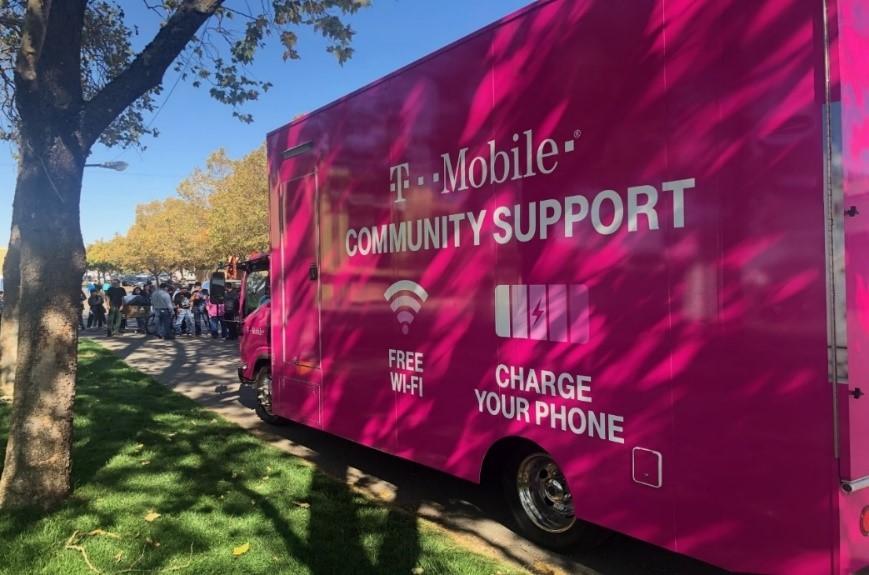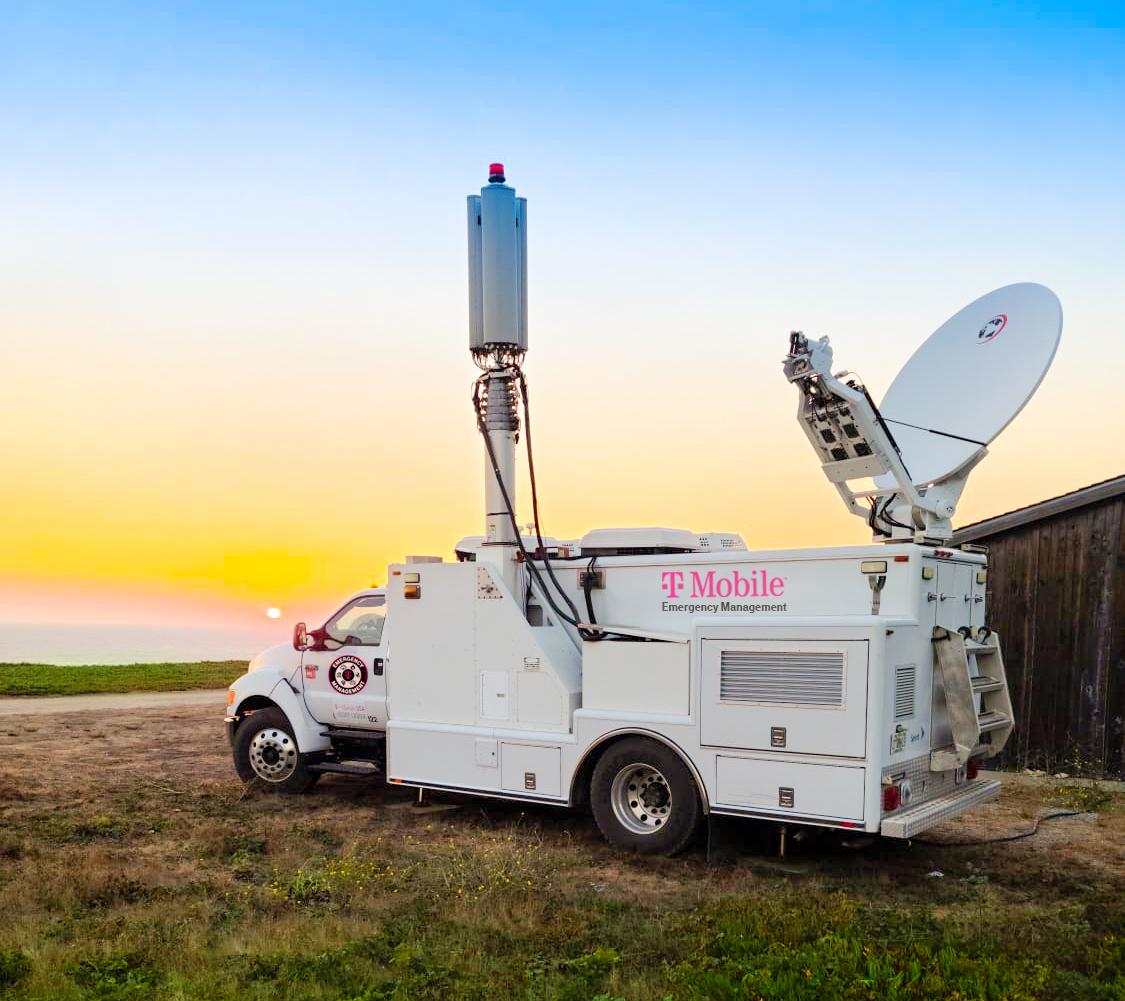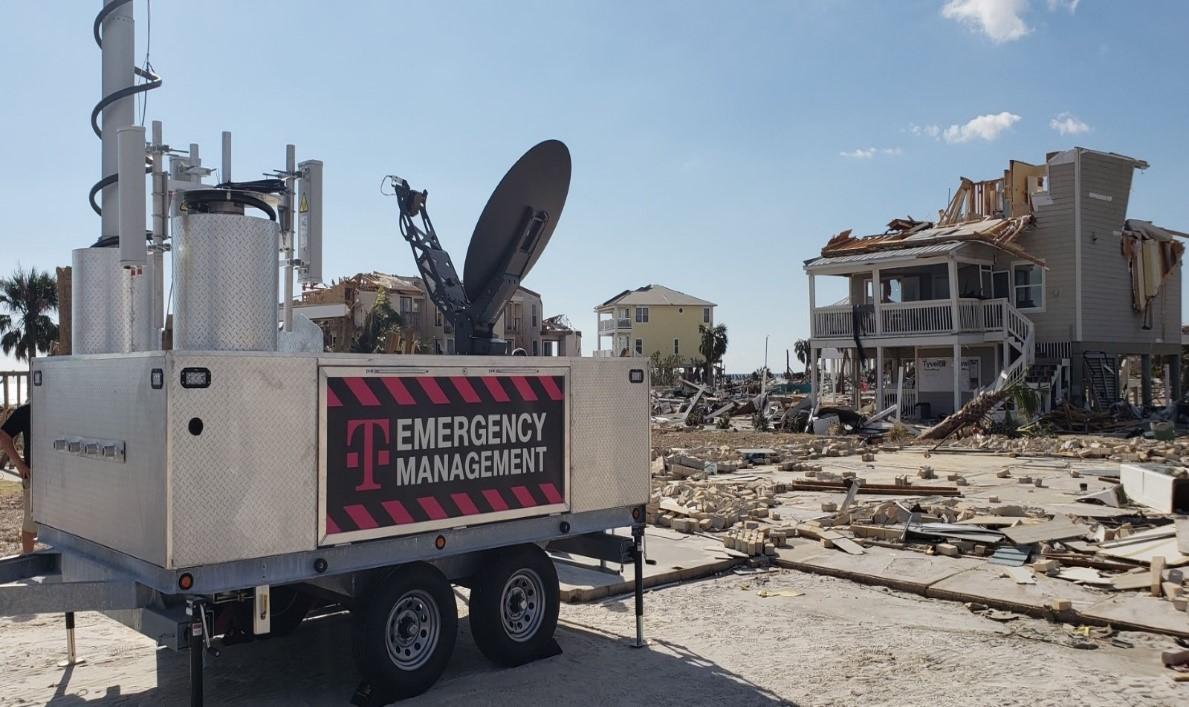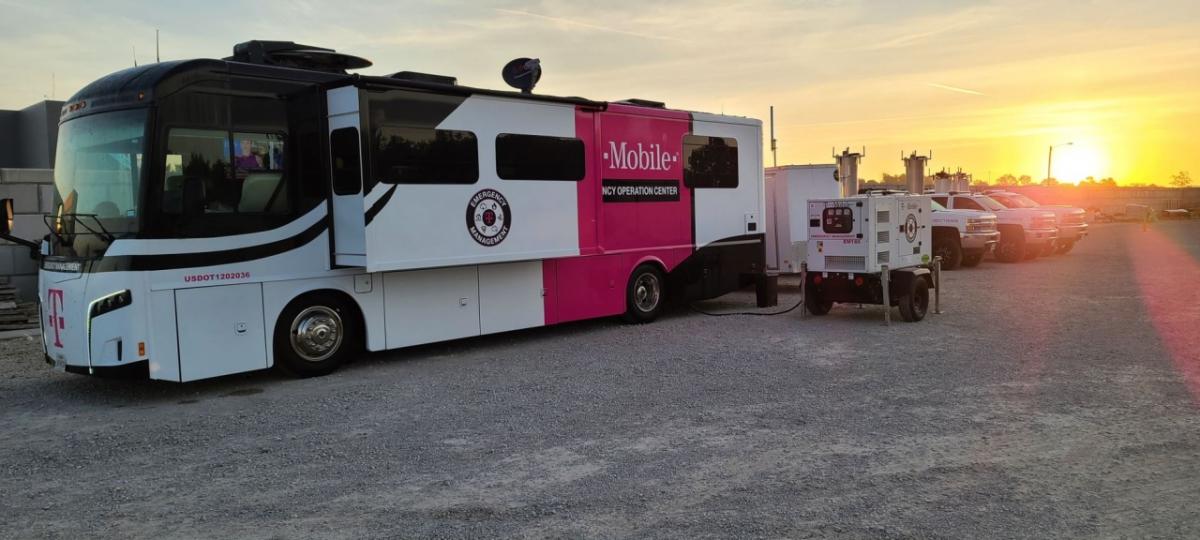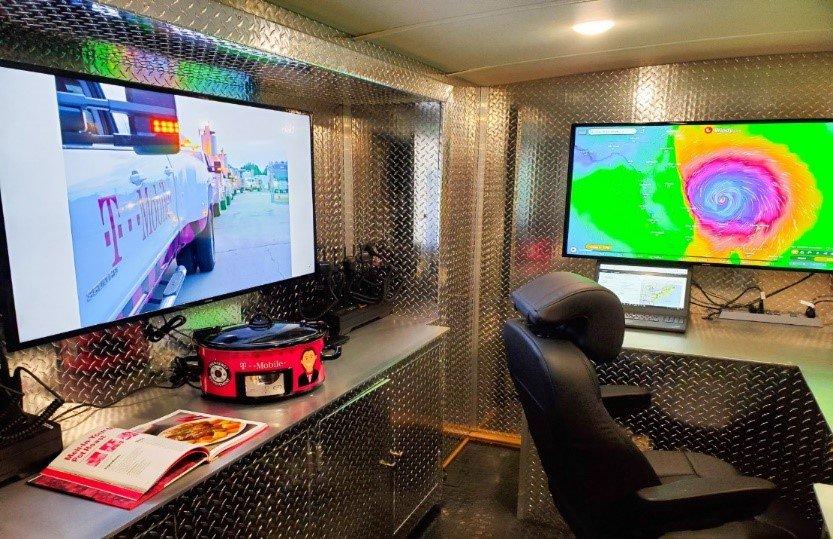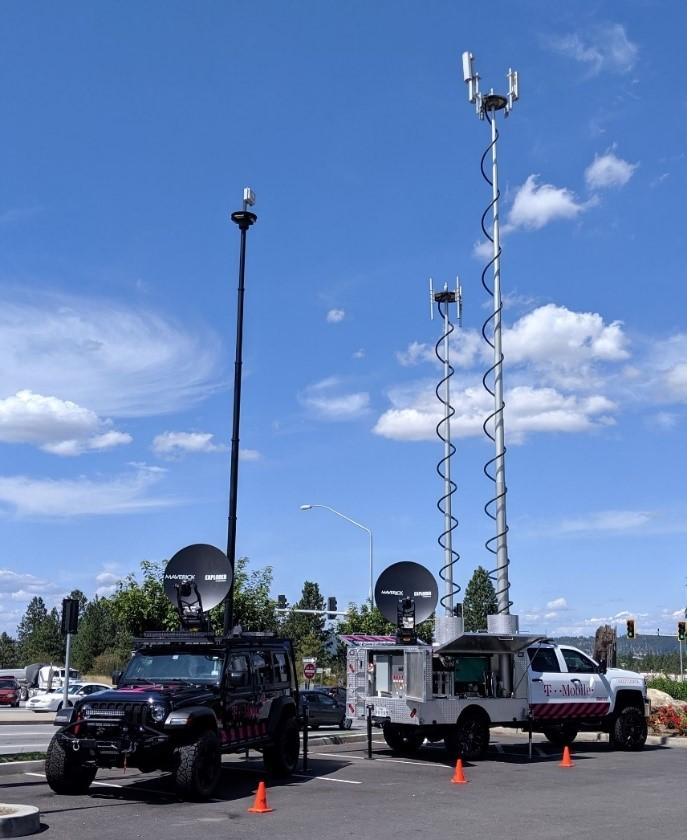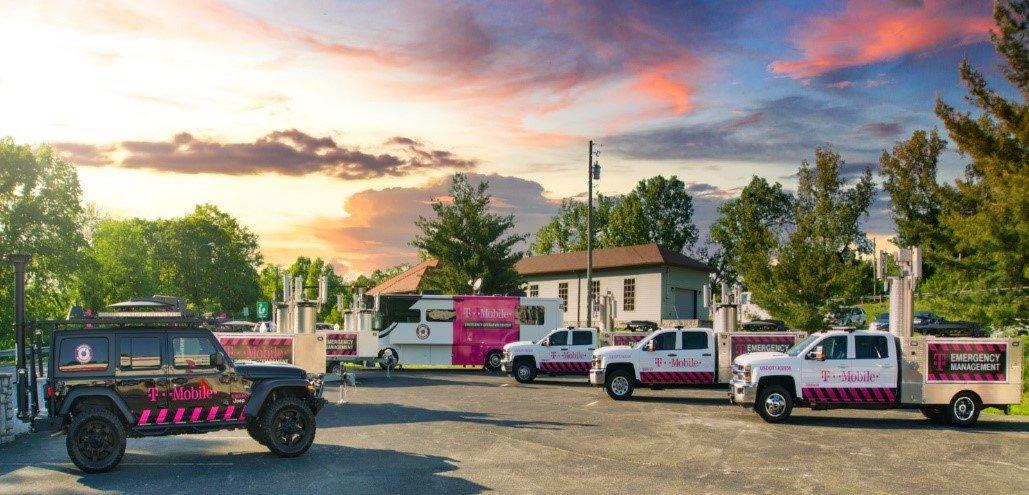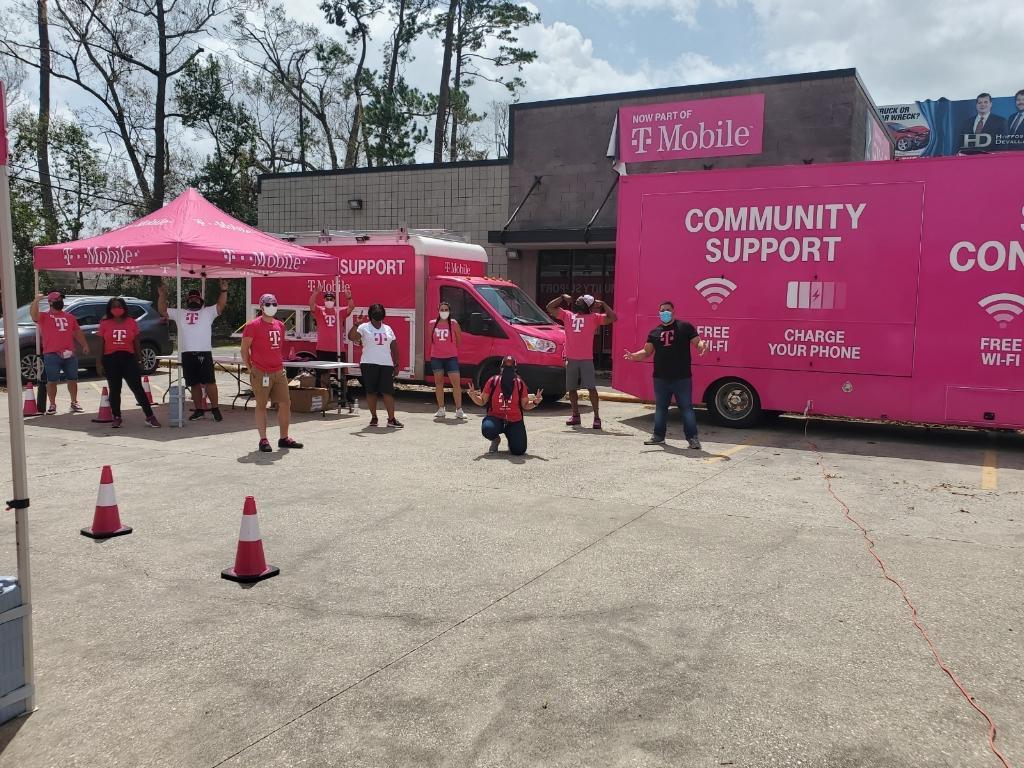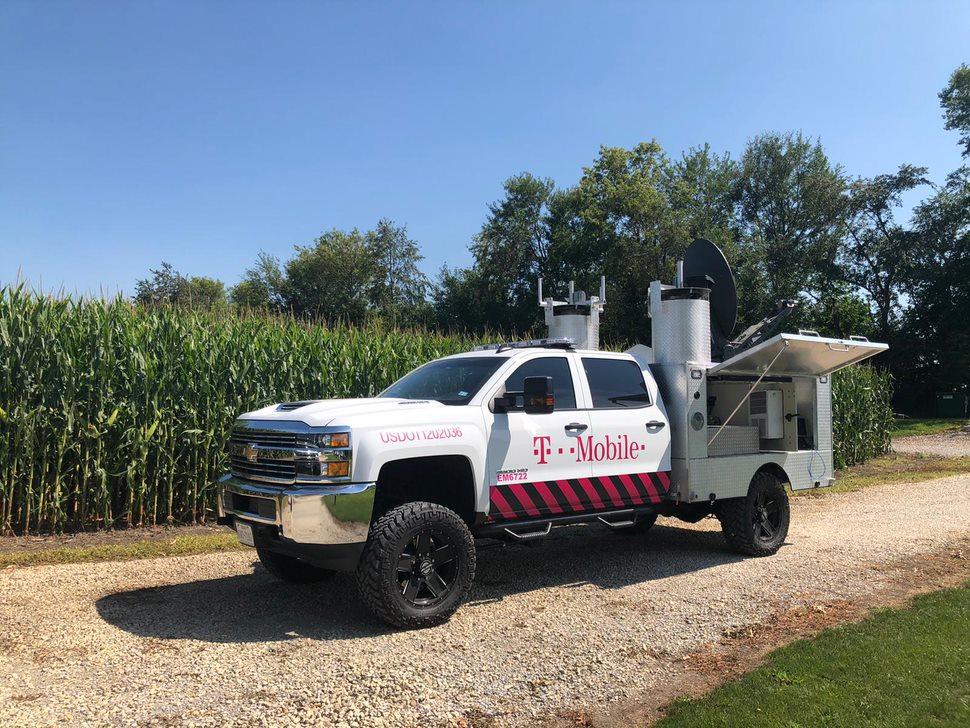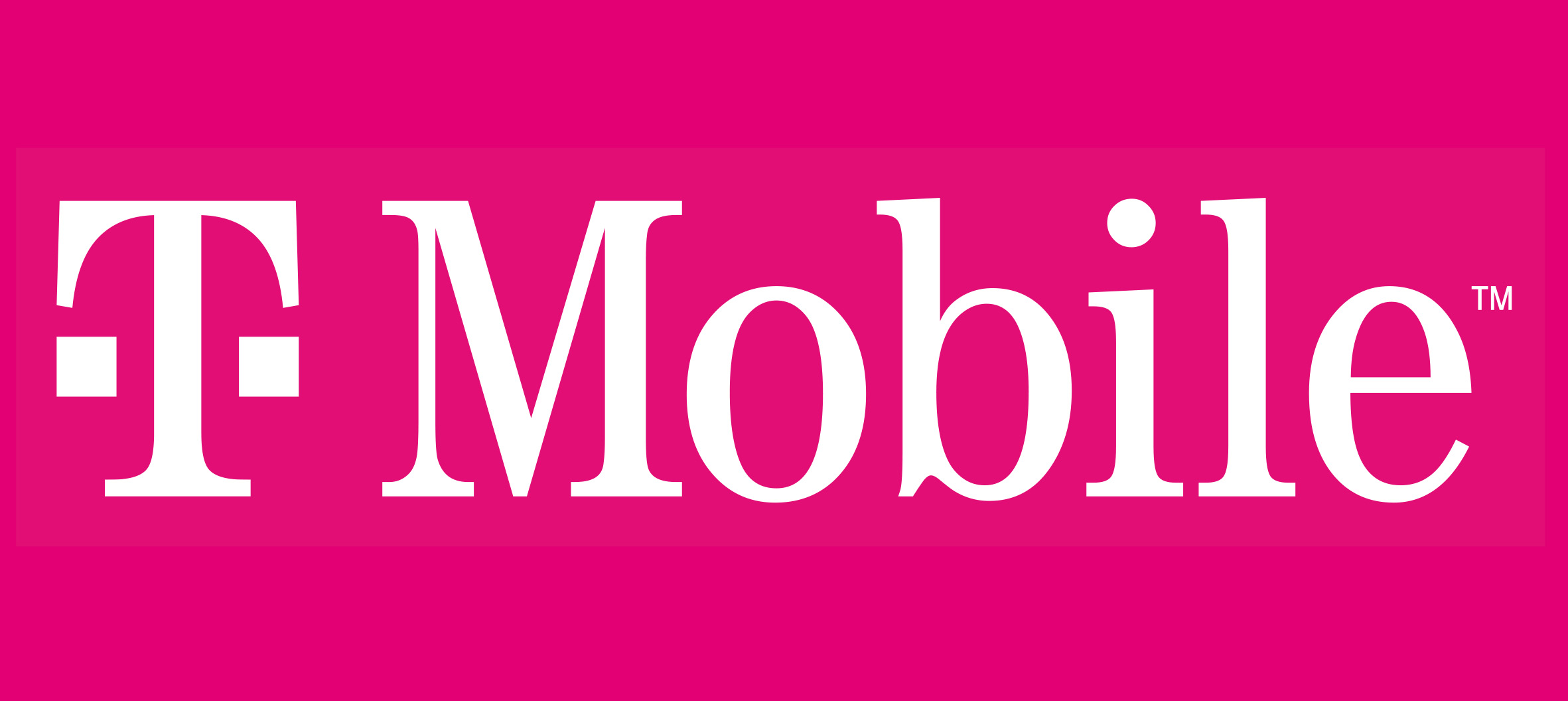Gearing Up: A Look at T‑Mobile’s Emergency Response Equipment
Throughout the year, communities across the country may face a number of natural disasters — hurricanes, tornados, wildfires and earthquakes — all of which can bring life-threatening conditions and cause devastation. In the face of any one of these natural events, major concerns center around the safety and well-being of people in impacted communities, from residents to first responders helping the community in the aftermath.
T-Mobile knows how important maintaining connectivity is for evacuation coordination, rescue efforts, calling a loved one to check in and more. We are committed to doing as much as we can for our customers by ensuring our network is ready and our emergency teams are prepared with the tools, equipment and gear they need to keep our customers connected.
Preparing for a Natural Disaster
T-Mobile works hard to prepare for emergencies and natural disasters that may impact our network, however in the lead up to North America’s 'disaster season,’ marked by the start of hurricane season around June 1, we make a number of preparations to ready our network and emergency response. This includes moving our extensive fleet of equipment from warehouse locations and strategically placing them in U.S. regions that are traditionally most vulnerable to severe storm conditions.
Once in the thick of disaster season, the T-Mobile Emergency Management Team (EMT) partners closely with the National Weather Service and other partners, like StormGeo, to track storms’ paths and projected areas of impact. We use this information to inform preparations and decide if and where our equipment and teams are needed, and we proceed to proactively send people, supplies and equipment to locations close to the projected areas of impact so that we can quickly and conveniently deploy in the aftermath of a storm, as needed.
First Response
After a storm passes through, our teams immediately get to work assessing the network remotely to determine any impacts to cell sites in the area. At the same time, field teams survey conditions on the ground and work with local authorities to ensure safe access into the area from their pre-event locations.
As our EMT assesses their response to best keep our customers connected, they also work very closely with local authorities to determine when it is safe to enter the impacted areas to carry out any repairs, or deploy a number of solutions that can keep cell sites operational, or provide coverage in the event sites are damaged in the storm.
Equipment
The T-Mobile EMT utilizes a variety of high-end technology and devices because we know that having the right equipment is critical. To that effect, we’ve specially designed and built some of our equipment and resources to meet our unique response needs to keep our customers in the most vulnerable communities connected.
Here’s a look at the latest and greatest used by our EMT!
Generators
All mobile networks rely on commercial power to operate. So, when a power grid is affected by a hurricane, storm, fire, earthquake, etc. as a result of damage caused by flooding or blown-over poles, the network will be interrupted and customers lose service.
When there is a power outage, generators are a key piece of portable equipment that our EMT utilizes to provide temporary power to cell sites connected to the affected power grid. After determining a cell site needs power, our team will set up and connect the generator to the site to restore service. Though there may be some instances, due to terrain, site access, resident restrictions or unsafe conditions that may prevent our teams from deploying generators to a site.
Our EMT utilize several of the highest-quality, best performing generator units available on the market. Plus, all new generators we have invested in meet Tier 4 emission standards, which allows our team to deploy them in every state in the country, including those with the strictest standards. Generator units are large, weighing approximately 4,000 pounds, and run on diesel fuel. So, once set up at a site, our teams will create a refueling schedule and return to the site to refuel the generator as needed until commercial power is back up in an affected area.
Satellites
In instances where there is complete lack of service in an impacted area immediately following a hurricane or other natural event, satellites are a critical device for our teams to bring service into an area that might otherwise have no service.
When safe to do so, our teams drive vehicles outfitted with satellites into areas hit hardest or set up a portable satellite kit directly on the ground in areas with no power or backhaul. Satellites have the capacity to provide basic services like texting, call and limited data to an area in order to support the community. This is especially important for first responders who rely on connectivity for their recovery and rescue efforts.
COLTs and COWs
Cells on Light Trucks (COLTs) and Cells on Wheels (COWs) are regularly utilized by our EMT as part of our recovery efforts. COLTs and COWs are unique to T-Mobile and specially designed to meet our EMT’s specific needs.
Once there is safe access into an area after a natural event, our teams drive COLTs and COWs to impacted areas. Using satellite, microwave or the existing circuit, if undamaged, at a site while towers undergo necessary repairs, COLTs and COWS bring coverage to a community that would otherwise have a coverage gap.
While both COWs and COLTs contain satellites and generators and have comparable technology capabilities, there are some physical distinctions. COWs look like a trailer and must be attached to a truck’s hitch in order to be transported, while a COLT’s satellite and generator are built directly into a truck. The advantage of a COLT is that our teams are able to drive them into some areas that may be too difficult or dangerous to tow a COW due to poor road or terrain conditions.
Vehicle Fleet
We’ve built out a fleet of roughly 20 different types of vehicles to support our EMT’s specific needs. We deploy our fleet when a major natural event occurs to transport our teams and equipment to areas of impact. Our fleet of vehicles consist of COLTs, COWs, RVs, Jeeps and more. Plus, since our merger with Sprint, we have doubled the number of satellite capable vehicles.
Our RV serves as the Emergency Operation Center, outfitted with monitors, self-contained WIFI access, small kitchen, bed, restrooms and workspaces where our teams can monitor network recovery, check emails and conduct meetings while deployed to communities hit by a storm. Our teams also open the RV up to first responders to utilize the WIFI or take a break.
Our fleet also contains several Jeeps, one of which can provide WIFI and cell coverage, plus has a charging station mounted to the front of the vehicle. We utilize this Jeep when we make visits to evacuation shelters, allowing evacuees to use its services.
Community Support Vehicles
It’s important to us that impacted communities have the support and connectivity they need during and immediately following a natural event. When communities are in need, we deploy our Community Support Vehicles to evacuation shelters to provide a range of supplies and services, including water bottles, pre-lit devices, charging stations, WIFI and more. Our team also utilizes Retail Support Trucks that are deployed to assist customers in areas where our local stores may be closed due to damage after a storm.
Click here to meet our community response team and learn more about how T-Mobile helps customers and communities in the aftermath of natural disasters.

